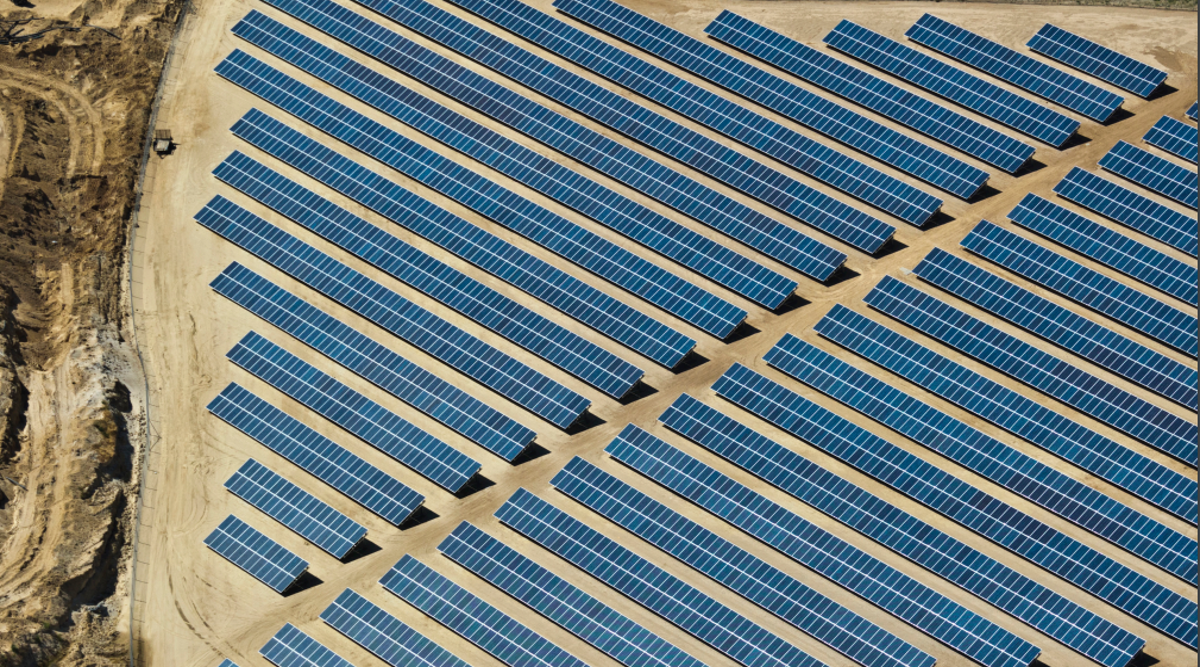
Sign up for daily news updates from CleanTechnica on email. Or follow us on Google News!
Q: What is the best thing about an abandoned coal mine? A: It makes the perfect place to put new solar energy installations. The land has already been forever scarred by the mining process, so there is no one going to town meetings bleating about solar panels destroying the look of the countryside. In addition, many of the coal companies which operated those mines skipped town when the coal ran out, leaving scars on the land that will last for hundreds of years. On February 11, 2025, the Nature Conservancy announced it was partnering with Cumberland Forest Limited Partnership, Sun Tribe Development, and ENGIE to develop 14 solar energy and 3 battery storage projects on 360 acres of former coal mines in the Appalachian mountains. This is the second round of clean energy project announcements from TNC’s Cumberland Forest Project in Virginia, Tennessee, and Kentucky.
The Cumberland Forest energy projects are intended to demonstrate that developers can build clean and renewable energy in a cost effective way on former mines while benefiting communities. They take an approach to renewable energy development that seeks to create benefits to climate, conservation, and communities — what the Nature Conservancy refers to as the 3Cs. The Nature Conservancy solicited competitive project proposals using the services of LevelTen Energy to ensure that the selected projects would meet the 3C criteria. As the projects are designed and built in the coming years, they are expected to provide increased local tax revenue, short term construction job opportunities, and a dedicated fund to finance additional community benefits. Abandoned coal mines do none of those things, although they are very good at being a nearly permanent blight on the land.
“When selecting which companies to work with, we sought those who were willing to push the boundaries of clean energy development with us,” says Brad Kreps, the director of the Clinch Valley area for the Nature Conservancy. “Developing projects on former coal mines in a way that engages with people in the local area so that communities can benefit takes ingenuity, skill, and determination. Ultimately, we selected Sun Tribe and ENGIE, two experienced developers that have a great interest in bringing this vision to life.”
The new projects will be developed on former coal mines such as the surface coal mine in Campbell County, Tennessee. The Cumberland Forest Project protects 253,000 acres of Appalachian forest in Tennessee, Kentucky, and Virginia and is one of the Nature Conservancy’s largest ever conservation efforts in the eastern United States. These new projects are expected to generate approximately 49 megawatts of solar energy and 320 MW of battery storage — enough to power 6,638 hones in Appalachia each year.
Solar In Appalachia
Sun Tribe’s new proposed projects will be located in both Virginia and Tennessee. Sun Tribe plans to develop one 5 MW solar generation project and 3 utility-scale battery energy storage systems ranging from 80 MW to 150 MW. The storage projects will enhance grid reliability in the immediate region and reduce the need for future grid upgrades — costs that are typically passed through to utility customers. “Locating solar and battery storage on former mine lands makes perfect sense to us,” said Danny Van Clief, CEO of Sun Tribe Development. “These sites and the communities they rest within have powered our country for more than a century. All we have to do is re-imagine them for today’s energy technology.”
ENGIE plans to develop 13 community-scale solar projects on former mines in Virginia, Tennessee, and Kentucky. These projects also take advantage of incentives from the Inflation Reduction Act, helping keep project costs down. ENGIE’s projects will range from 1 to 6 MW in size and will increase local access to clean power. “ENGIE is thrilled to collaborate on the development of these projects with The Nature Conservancy,” says Kristen Fornes, ENGIE head of distributed solar and storage. “Converting former coal mine sites into solar energy facilities presents a unique opportunity to transform environmental challenges into significant economic and social benefits. These initiatives not only contribute to the reduction of greenhouse gas emissions but also generate employment opportunities, rejuvenate local communities, and enhance access to clean energy in areas where it is most needed.”
These newly announced agreements build on 3C renewable energy efforts already underway by the Nature Conservancy and developers Sun Tribe and Dominion Energy. Since 2021, Sun Tribe and Dominion Energy have been conducting pre-development work with the goal of generating 140 MW of renewable energy on eight existing sites within the Cumberland Forest. The first project expected to come online is a 10 MW solar array called Wildcats Solar, located in Wise County, VA. Proposed to be in construction by 2026, the project is designed to provide clean power and an estimated $800,000 in tax revenue to the community over the project’s lifetime. Other solar projects from the first round of project announcements are scheduled to come online by 2029.
Community Benefits
According to the Mining The Sun report from the Nature Conservancy, the Cumberland Forest Project is designed as an impact and investment fund, which means that the property is managed to generate positive conservation, social, and economic outcomes. This includes renewable energy deployment to address climate goals, generate revenue, and contribute to local economic diversification. The property is also managed for forest carbon sequestration, sustainable timber harvesting, wildlife restoration, and expanded outdoor recreation opportunities. The Central Appalachians are known for their ecological significance as well as a long history of coal mining that has fueled American industrialization for two centuries. In recent years, the steady decline of the coal industry has driven the region to explore and pursue a variety of economic diversification strategies, and the Cumberland Forest project seeks to connect with and support local economic needs where possible.
Danny Van Clief says, “Responsible solar development strengthens a county’s tax base with revenue that can support schools, libraries, parks, and other community priorities. These projects aim to do even more. By including additional funding for a community benefits plan, we are creating a vehicle for direct local investment and workforce training that is additive to the traditional benefits associated with solar development. And through continuous community engagement, which is now underway, we are going to ensure that funding is directed in a manner that the community itself agrees with.”
Policies & Possibilities
Sharp-eyed readers will have noted the reference to funding via the Inflation Reduction Act. By now, we all know the current administration, led by Obergruppenführer Musk, plans to take a sledgehammer to that legislation because it seems to distribute federal tax dollars to all Americans, not just white nationalists. As such, it is a product of corrupt “woke” thinking that must be smashed. Whether the Nature Conservancy and its partners will ever see a dime of the money they expected to receive is now up in the air. It seems unlikely any of these projects will move forward without it.
The current dictator president is so ineffably ignorant, he thinks “clean coal” means washing it before it gets shoveled into the fire box at a thermal generating station. And so the people of Appalachia will still be able to take their children on picnics at the site of abandoned mines and pay higher taxes to pay for essential community services. The tragedy here is that coal is nothing more than stored sunlight. Solar panels allow us to convert the sun’s rays into electrical energy instantly. It takes millions of years to make coal. The real choice is whether to harvest energy from the sun or burn all the coal we can find, knowing there won’t be any more for eons. It seems such a simple choice, but apparently dismantling a civil society is more important to voters, who should bear this simple thought in mind:

Chip in a few dollars a month to help support independent cleantech coverage that helps to accelerate the cleantech revolution!
Have a tip for CleanTechnica? Want to advertise? Want to suggest a guest for our CleanTech Talk podcast? Contact us here.
Sign up for our daily newsletter for 15 new cleantech stories a day. Or sign up for our weekly one if daily is too frequent.
CleanTechnica uses affiliate links. See our policy here.
CleanTechnica’s Comment Policy

